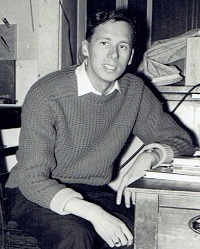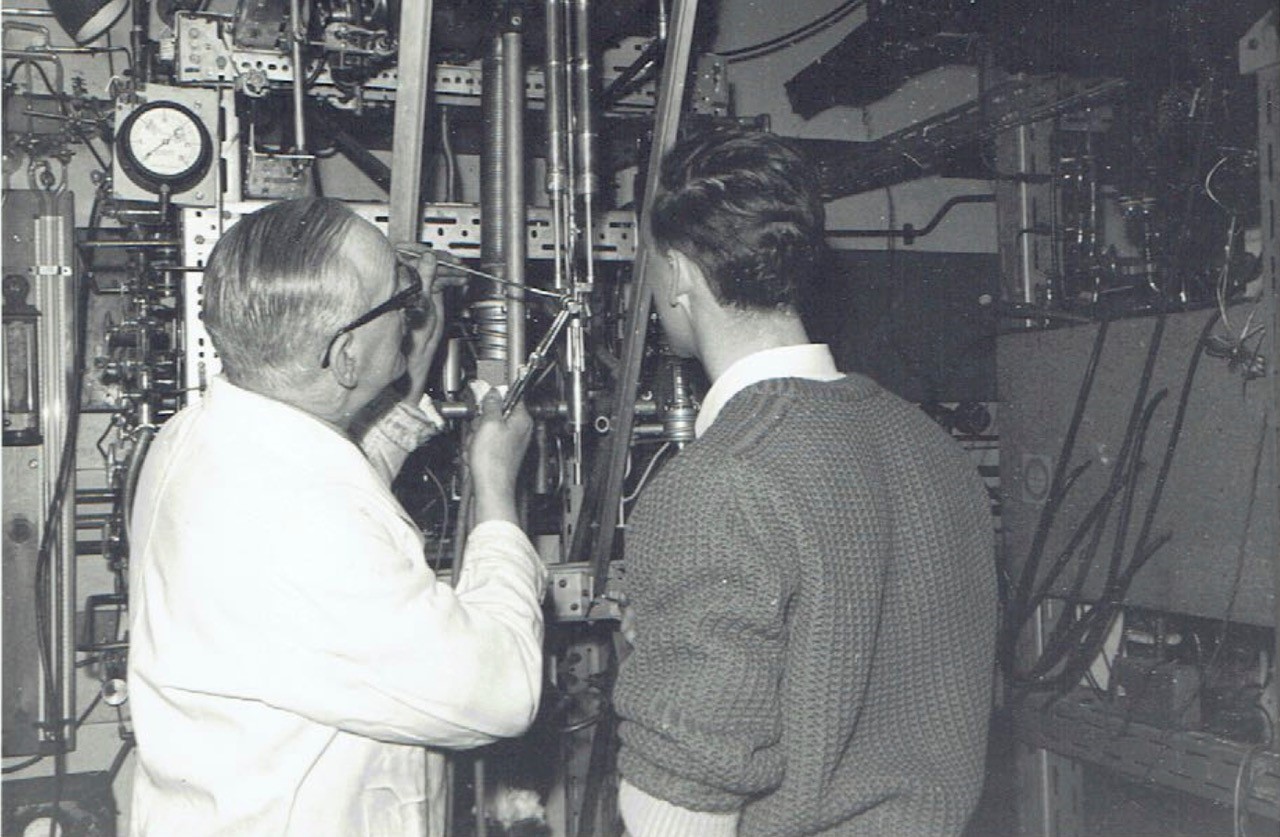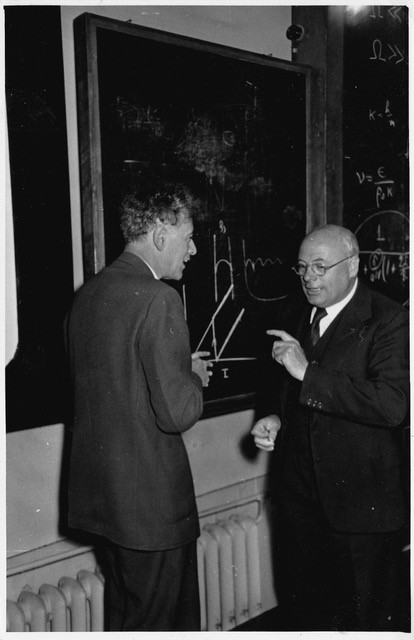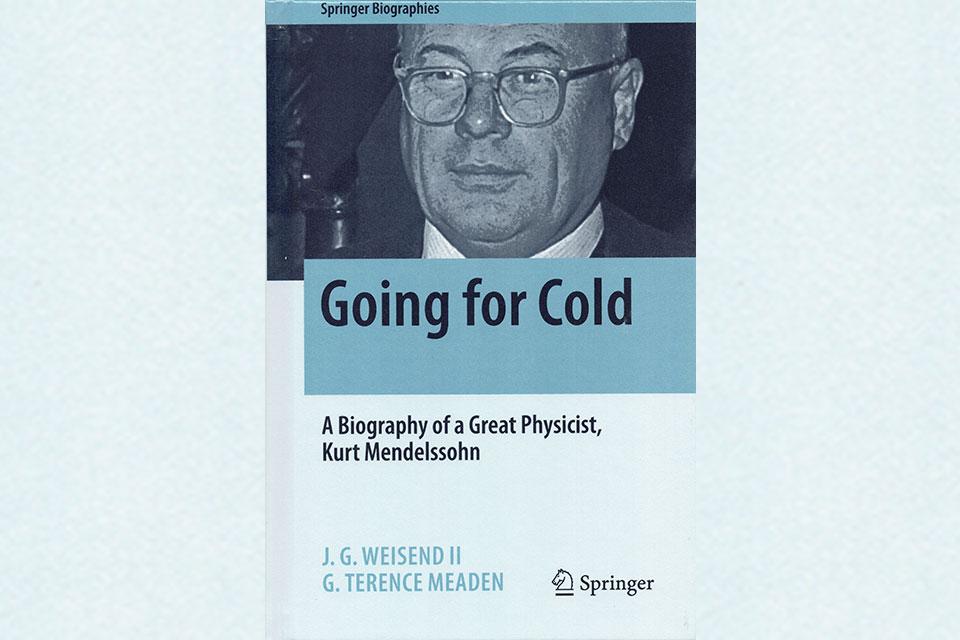
St Peter’s College alumnus, Terence Meaden, is co-author of Going for Cold, the Springer biography of Kurt Mendelssohn. Here he looks at how the Clarendon began its rise to fame in the study of low temperature physics.
The head of the Clarendon Laboratory from 1919 to 1956 was Professor Frederick Lindemann, who from 1942 was known as Lord Cherwell. He was a great man in the history of the Clarendon and the history of Britain by being Winston Churchill’s close scientific advisor and confidant during the years of the Second World War. Professor Lindemann’s lecturing colleagues in the undergraduate teaching of low temperature physics when I was an undergraduate (1954-1957) included Kurt Mendelssohn and Nicklaus Kurti. I valued the lectures of all three as I became aware of the importance and excitement of the discoveries being made about the properties of liquid helium and superconducting metals. I soon viewed it as an ambitious aim to join one of the teams. Thus, in my finals year I registered my name with Mr T C Keeley—the managing director of the Clarendon—as being interested in post-graduate research if the opportunity arose.

I took finals in June 1957, and was soon gratified to receive from Dr Mendelssohn an invitation for interview regarding a proposal of embarking on a doctoral research project. A few days later I was interviewed in Oxford, got accepted, and was at once being shown the cryostat that the workshop had built to Dr Mendelssohn’s design for use in Oxford with thorium and uranium. I learnt I would also be using a similar cryostat at the Atomic Energy Research Establishment, Harwell, where I would be applying my newly-acquired cryogenics knowledge and would work on the highly toxic radioactive metals plutonium and neptunium using the protection of a glass-sided glove box. I started in October 1957, and ten years of knowing Dr Mendelssohn were underway.
An ambitious path
Kurt Mendelssohn was an amiable likeable person, an easy conversationalist, and, like me, willing to discuss almost anything. His was a kindly mindset and cheerful worldview. Born in 1906 he had followed an ambitious path in Germany, and pursued it in his Oxford years to immense scientific advantage. His investigations were pioneering and his highly successful research in the 1930s led to election in 1951 as a Fellow of the Royal Society.
In 1919, Frederick Lindemann, who had studied in Berlin under Nobel prize winner Walther Nernst (formulator of the third law of thermodynamics), was named to the Professor Lee Chair of Experimental Philosophy at Oxford; this made him head of the Clarendon Laboratory and responsible for restoring Oxford’s physics research to a high level. Lindemann began considering how to develop practicable research in low temperature physics because of his previous experience in this domain in Berlin with Walther Nernst. An unexpected opportunity arose after a while.
In Berlin University, Kurt Mendelssohn began research in 1927 under his cousin Franz Simon who was 12 years older. KM (as we in Oxford often called Dr Mendelssohn) got a well-earned PhD in 1930 and stayed on as a post-doctoral assistant to Dr Simon. In 1931 when Simon became a professor at the Technische Hochschule in Breslau (now Wroclaw in Poland), he took KM and Niklaus Kurti with him. Lindemann, knowing them and the institute well, purchased a hydrogen liquefier from the Breslau group which served as a backbone of the Clarendon Laboratory for many years.
A dangerous place
Unhappily, Breslau was becoming a dangerous place with early Nazi terrorism, and after Hitler became Chancellor in January 1933, he declared in March that the only legal political party was the Nazi party and that members of other parties were to be rounded up to liberate the country from non-Nazis.

Kurt Mendelssohn was immediately fearful because in his late teens he had joined his father in becoming a member of the Reichsbanner Schwarz-Rot-Gold party, formed in 1924. Its objectives were to defend parliamentary democracy against subversion and extremism from the left and right, to teach the people to respect the Weimar Republic, and to honour its flag and constitution. Although baptised a Lutheran and not religious, KM came from a famous Jewish family line. He was further at risk in being an intellectual, and even worse, a physicist, for Hitler made out that Einstein’s Theory of Relativity was an example of degenerate ‘Jewish physics’.
Destination: Oxford
KM’s daughter Dr Monica Mendelssohn explained what happened next: ‘At Easter, in April 1933, Kurt and his wife Jutta went to Berlin where Jutta was going to stay with her mother in central Berlin, Kurt then left to go to Baabelsberg in the west of Berlin to visit his parents. Somewhere along his journey he felt someone punching him in the back and turned round to come face to face with a “brown shirt” who aided by other brown shirts was tying a cordon of rope around a group of people being taken off to be questioned about their political affiliation. Kurt was completely terrified by being so nearly captured and aware that he had to get out of Germany immediately. He phoned Jutta to tell her that he was leaving for England the next day and that she should pack up and follow him. Jutta was in no danger herself as she had no political commitment and was not Jewish.’ His destination was Oxford to seek a post with Lindemann.
Lindemann had early recognised the danger of the Nazis. He knew there would be a flood of refugee scientists and saw an opportunity to reinforce Clarendon’s research programme—but Oxford did not have the funds to establish a host of new permanent positions. Lindemann explained this to an old friend Sir Harry McGowan, Chairman of Imperial Chemical Industries, and convinced him that it would benefit Britain, ICI and Oxford if these scientists were financed. Dr Mendelssohn got the first grant, starting 1 May 1933, and Drs Simon, Kurti and Heinz London reached Oxford in the autumn with their positions secured.
A great physicist
Thus, it was, that Mendelssohn’s team and Kurti’s team came to be founded and endowed at the Clarendon Laboratory, and in 1957 I appreciated how fortunate I was to have known this great physicist and busy man—a kindly father of five children with a caring, supportive wife Jutta.

